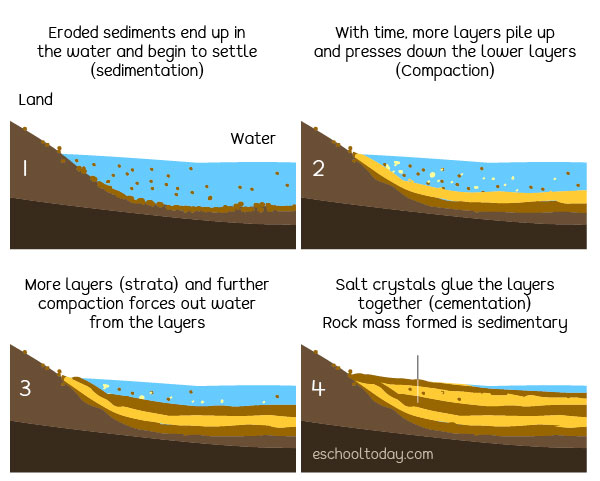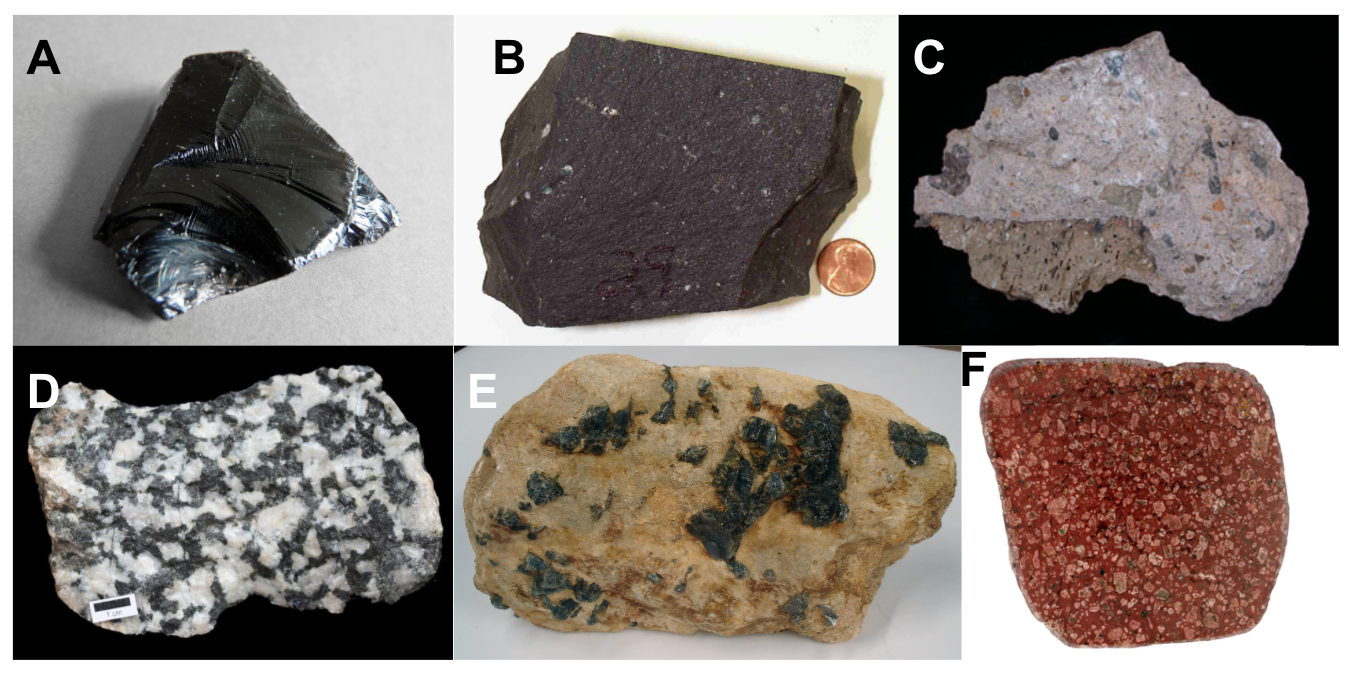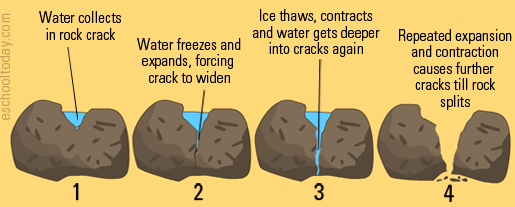The Rock Cycle
10SCIE - Geology
Finn Le Sueur
2024
Akoranga 16 Mahi Tuatahi
- Open Education Perfect and complete the task on Volcanoes (10min)
- Head up the date in your book
- Open the slides on The Rock Cycle and make notes in your exercise book
The Rock Cycle
All rocks are recycled over and over again thanks to the mantle, and processed on the crust that break down rocks.
Collect a rock cycle diagram from the front of class and glue it into your book.
There are three types of rock that we are interested in:
- Sedimentary
- Igneous
- Metamorphic
Sedimentary Rocks
- Formed through the compaction of broken down rocks.
- Rocks can be broken down by the wind, rain and other processes, and these small particles of rock are carried by rivers to lakes and the ocean.
- Once they settle to the bottom, layers start to form and the pressure increases from all the weight above!
- This pressure starts to compact the sediments into sedimentary rock. It is quite brittle!

- Castle Hill and Cave Stream are made of limestone - a sedimentary rock
- Sandstone and mudstone are also sedimentary rocks
- Pancake rocks are made of sedimentary rocks, too!
- Sedimentary rocks are easily eroded, this is why the blowholes and Cave Stream could form.

Igneous Rock
- Igneous rock is formed when lava/magma cools down and solidifies
- If it cools above the surface, it cools quite rapidly. This is called extrusive igneous rock.
- If it cools below the surface of the crust, it cools comparatively slowly. This is called intrusive igneous rock (think intrusive –> in).
- Intrusive igneous forms rocks with large crystals, and extrusive forms smaller crystals.
Task/Ngohe: Categorise These Rocks

Whakatika
- Extrusive (small crystals): A, B and C
- Intrusive (larger crystals): D, E and F
- When you go walking/biking/running on Banks Peninsula, the large rocks that you go over are igneous rocks!
- Lots of them make really good climbing crags, or mountain bike tracks (e.g. Lava Flow near Bowenvale).

Metamorphic Rock
- Metamorphic rocks are rocks that have changed shape e.g. been recycled
- They get recycled by the mantle, where they are subject to intense heat and pressure
- They typically have a banded appearance
:max_bytes(150000):strip_icc()/GettyImages-565058911-1--58b599d33df78cdcd86dd9e6.jpg)
Task/Ngohe: Identify Rocks
- Collect a tray and magnifying glass from the front
- Use the magnifying glass to inspect each rock. Look for bands, crystals and other features!
- Categorise each rock on the tray as Igneous, Sedimentary or Metamorphic.
- ⬆️ Write their names next to your notes in your exercise book. ⬆️
Ngohe/Task: Erosion vs Weathering
- Write a heading “Weathering vs Erosion” in your book
- Put a small column down the middle of your page
- Use these websites to make some notes on weathering
and erosion in your own time!
- http://www.onegeology.org/extra/kids/earthprocesses/weathering.html
- https://www.doe.virginia.gov/instruction/gifted_ed/project_promise/science_curriculum/grade_two/handouts/earth_science/weathering_erosion_pictures.pdf
- Make sure you include some examples of weathering and erosion
Freeze-Thaw Weathering
Perhaps the most common and impressive types of weathering is the freeze-thaw cycle. Water can get into the smallest of cracks, and when it freezes, it expands. This expansion exerts force on the surrounding rock, cracking it slightly. When it melts it can get a little further into the rock, and repeat until the rock is broken! Sketch this diagram in your book.

Ngohe/Task: The Rock Cycle on Banks Peninsula
- Open the Google Doc on Google Classroom
- Find a diagram for the three situations described
- Use your notes, rock cycle diagram and best geology vocabulary to answer the questions in the Explanation section!